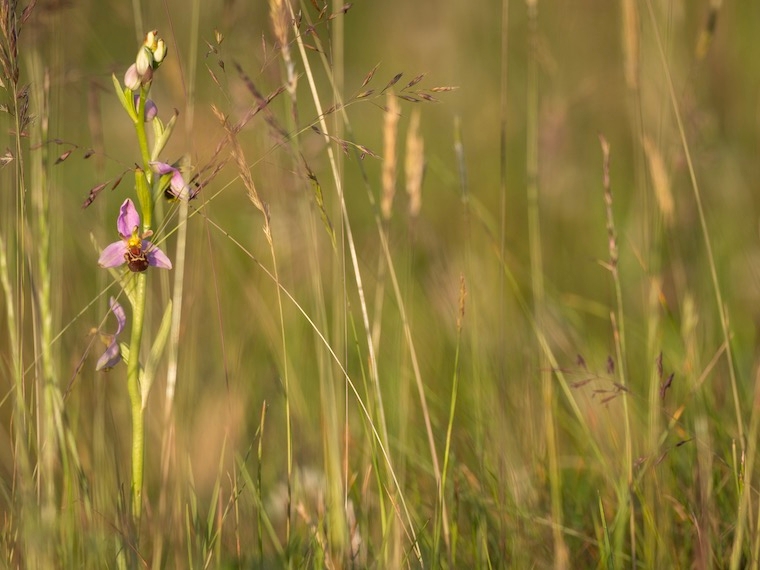About this time of year, two sorts of pictures end up doing the rounds on social media. The first is roughly along the lines of this one, which is being shared from the BBC website:
https://twitter.com/BBCNews/status/1145862398357778438
This sounds like a lovely, positive story of a council doing its bit for nature by sowing wild flowers on its verges. More on that shortly.
The second involves someone heartbroken that their beautiful roadside verge has been mown by their local council:
https://twitter.com/BirdGuides/status/1118178485632163840
Most people might think that the former is a good solution to the latter: one involves a switched-on council, and the second involves a stupid one, surely? But unfortunately they are different parts of the same problem, which is that no-one seems to know what our native wild flowers actually look like.
You see, the beautiful roadside verge that the BBC has illustrated its story with is full of wild flowers, but unfortunately few of them are actually native to Britain. Many can only be found growing wild in America, where they do look truly beautiful. But they are no more wild in Britain than lavender or magnolias, both of which are utterly stunning but not native to these Isles.
You’ve heard of fake news, but these are fake meadows, collections of flowers that would never normally grow together in the wild, and which are in many cases not even native to this country. The Common Poppy, Papaver rhoeas, grows on farmland among crops and at field edges. Wild flower mixes often include a different poppy, the bright orange Californian Poppy, Eschscholzia californica. As the name suggests, this comes from a land rather different to Britain. This year, it turned whole hillsides in America flame-coloured as part of a ‘super bloom’, which followed particularly good rains and warm temperatures. These poppies look lovely, but to call them wild flowers in Britain would be a bit like saying chickens are the same as blue tits.
Cornflowers, Centaurea cyanus, similarly prefer regularly tilled land and field margins. Ox-eye Daisies, Leucanthemum vulgare, do grow in real meadows, but rarely with the other cornflowers and poppies . And Cosmos, a lovely frothy pink or white flower, isn’t native either. And yet most people think that these seed mixes, which need to be re-sown annually, are the epitome of a ‘wild flower meadow’. As someone who talks a lot about fake news might say, this is sad.
British wild flower meadows (like those in the pictures that I’ve taken, below) often have a subtler but deeper beauty. Many of their plants are perennials, and don’t need the soil to be re-tilled and re-sown each year like pictorial plantings do. Not all the flowers announce their presence immediately. Even if you spot the bee orchids first time, you’ll have to creep a bit closer to find speedwells, water avens, forget-me-nots (one of which changes colour from yellow to pink to blue as its flowers mature) and smaller but no less wonderful orchids like the Fly Orchid.




This might sound like pedantry to a lot of people who just think the eight mile-long ‘river’ of wild flowers in Rotherham looks much better than a plain old verge, saves thousands of pounds in mowing costs, and is still very nice for bees. But while all of those things are true, it is still not helpful to conservation efforts to call these pictorial sowings of flowers ‘wild flower meadows’.
You see, if people think that Californian wild flowers are actually native to Britain, then they’re less likely to understand what the native wild flowers are that we are losing. We have lost 97 per cent of our native wild flower meadows, and we risk losing the remainder if we have no idea what they look like, and expect them to all look like something that a municipal gardening contractor has to maintain every year.
Councils still mow true wild flower meadows which happen to grow on their verges for precisely this reason: local people ring them up to complain about the ‘weeds’ that are growing, without realising that the verge is actually the last natural refuge for real native wild flowers. It’s why charity Plantlife is campaigning both to protect roadside verges and to educate people about what British wild flowers really look like: fake meadows and destroyed wild verges are part of the very same problem.
Whenever a botanist points this out, though, they are accused of being a curmudgeon, which is odd as I doubt there would be the same reaction if you pointed out that mink, for instance, isn’t native to the UK and shouldn’t be released into the wild. I suspect the difference is merely that even people who consider themselves switched on to nature are still commonly afflicted by something known as plant blindness. This hasn’t been helped by the demise of university-level botany courses, or indeed a general lack of interest in nature programming that involves plants over the past few decades. Plants can deceive, kill, intoxicate – as well as feeding us and looking pretty, and their complex relationships and sneaking evolutionary traits are no less fascinating than something with four legs that moves. Native plants have also evolved alongside our native fauna, which means that while a sown meadow of non-natives might well be good for bees, real natives will provide a much richer habitat, not just in terms of nectar, but also as food for invertebrate larvae, and so on.
Of course, there’s nothing wrong with a council planting some cheery plants on a dreary roadside verge where nothing else was growing. But they’re not wild flowers. In fact, the wild flowers you should be encouraging were probably on a nearby verge, until someone complained about the ‘weeds’.
Read Isabel Hardman on how to spot British wildflowers







Comments